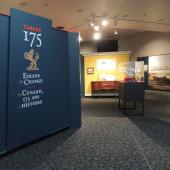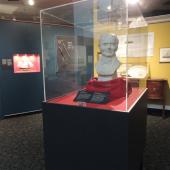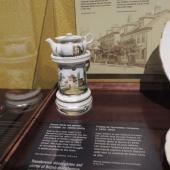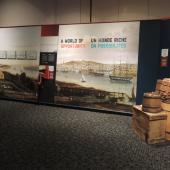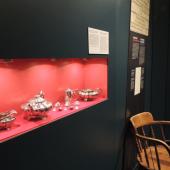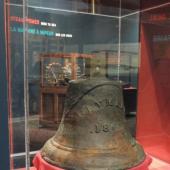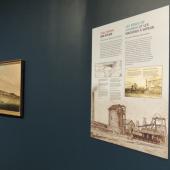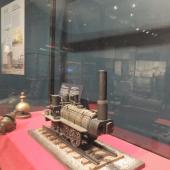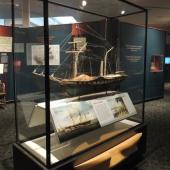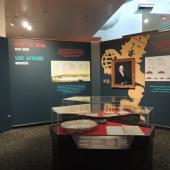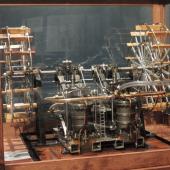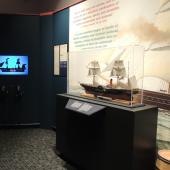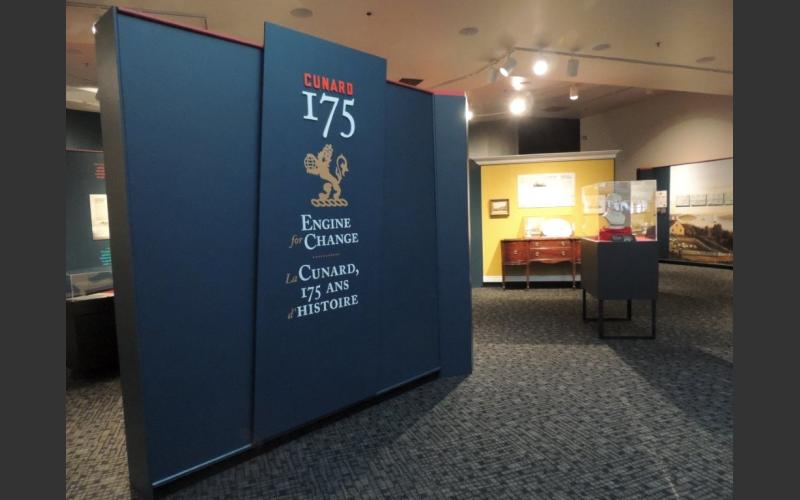
Cunard 175: Engine for Change
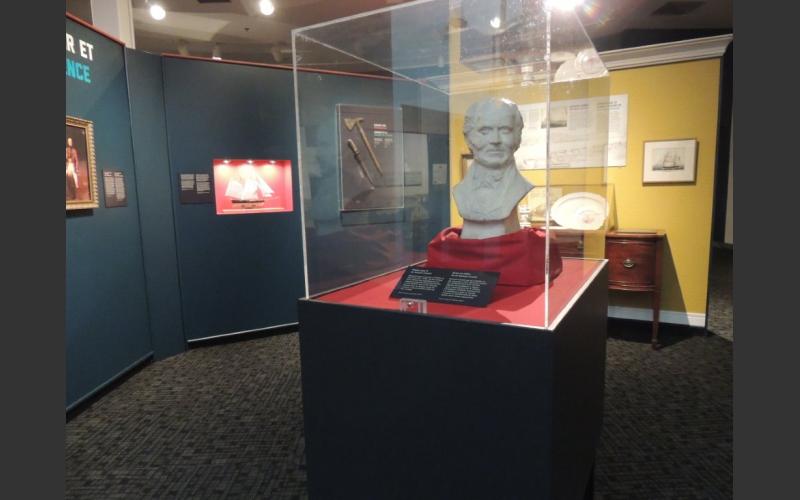
Sir Samuel Cunard, 1787-1865
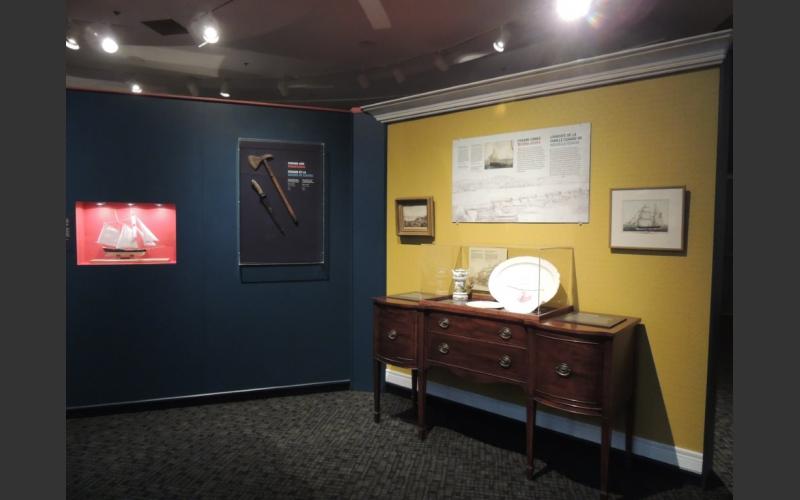
The Cunard family settled in Halifax and their business benefitted from privateering during the War of 1812.
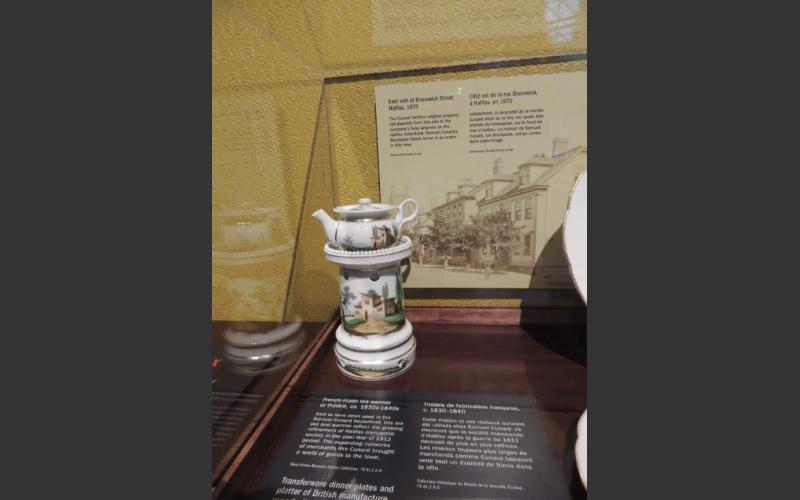
French-made tea warmer ca. 1830s-1840s said to have been used in the Samuel Cunard household.
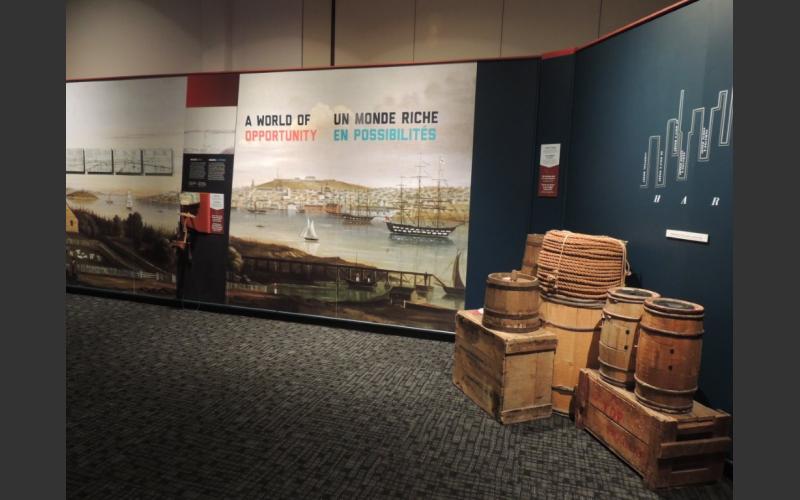
Locating along the Halifax waterfront gave the Cunard business many opportunities.

As agent for the East India Co., Cunard brought shiploads of tea from China to the elite of Halifax and elsewhere.
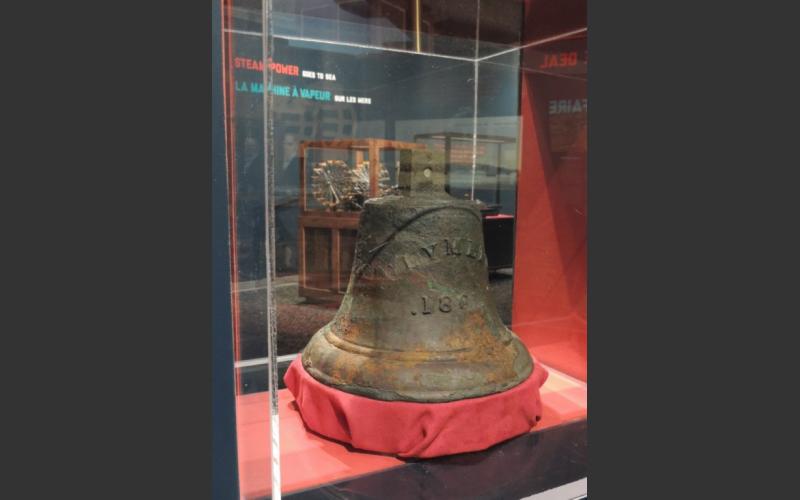
This bell from a shipwreck helps to tell the story of Cunard’s concerns for safety on the sea as Nova Scotia’s Lighthouse Commissioner.
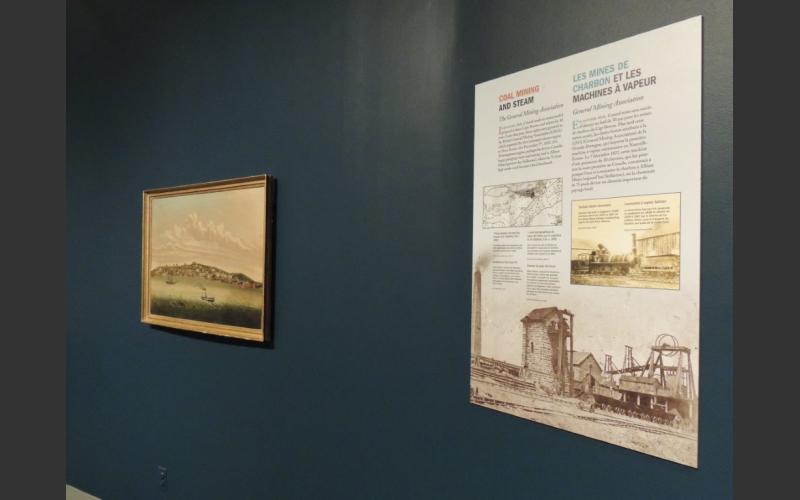
Cunard was agent to a coal company headquartered in Pictou County which gave him access to coal and steam engines.
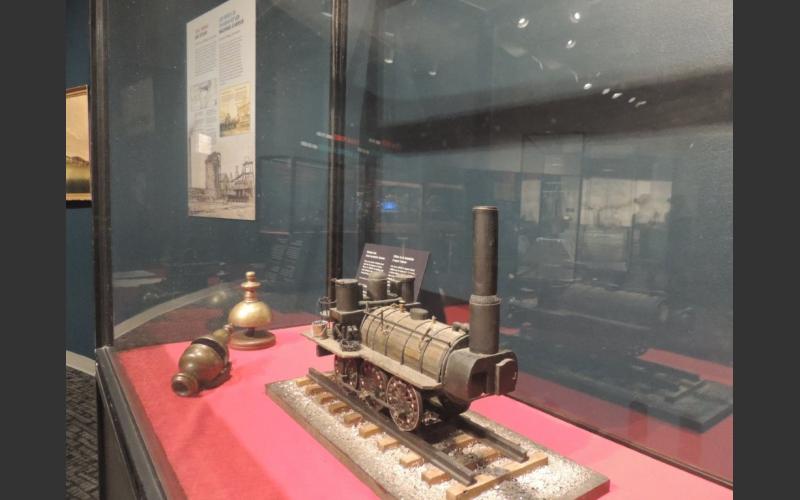
Cunard celebrated the arrival of Samson from England, one of the first locomotives ever seen in Nova Scotia.
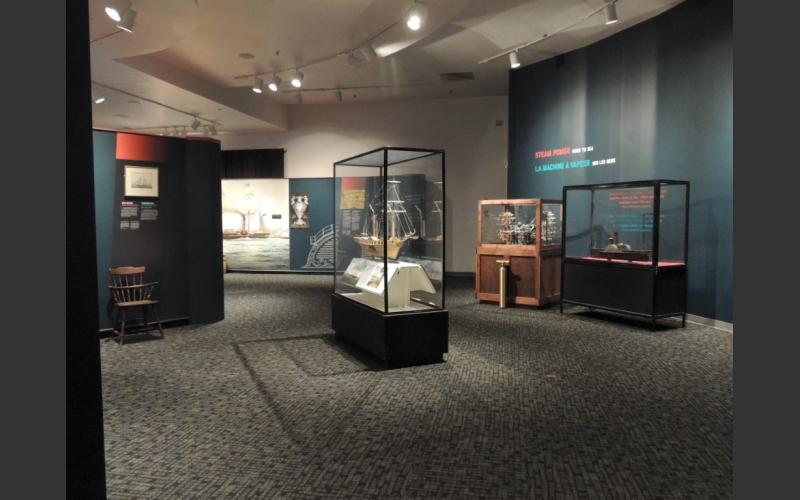
The rise of steam power strongly influenced Cunard and his fortunes.

The Royal William, in which Cunard was an investor, crossed the Atlantic from Pictou to Liverpool, England in 1833, powered mostly by steam.
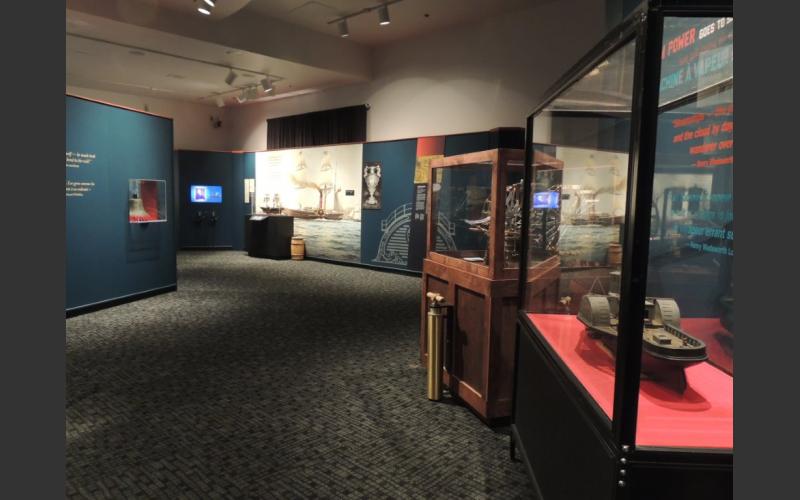
Ship models help to tell the Cunard story.
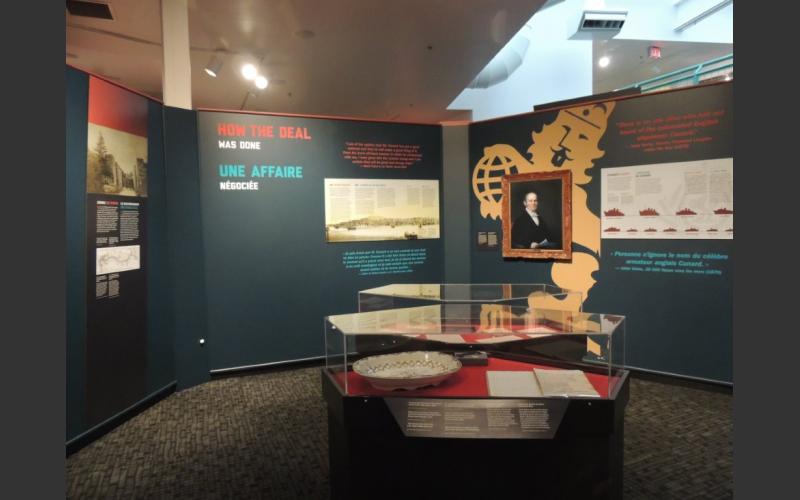
The beginning of the Cunard steamship line is explained.
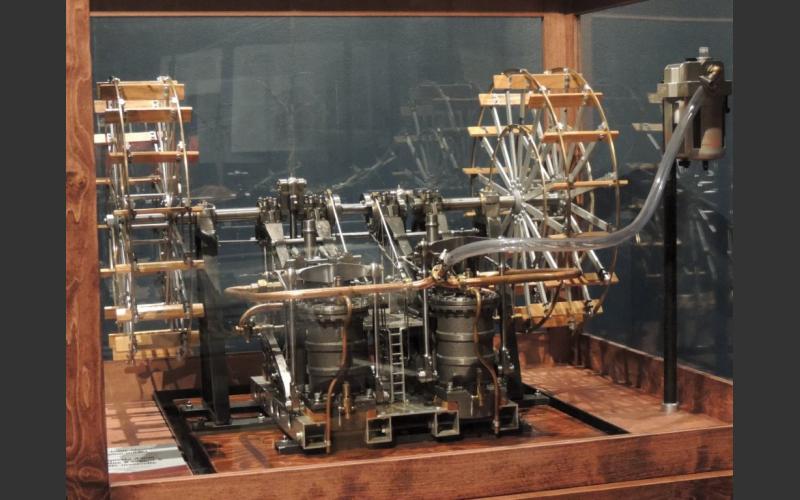
Visitors can operate this side lever steam engine model to explore the technology Cunard first used in his steam vessels.
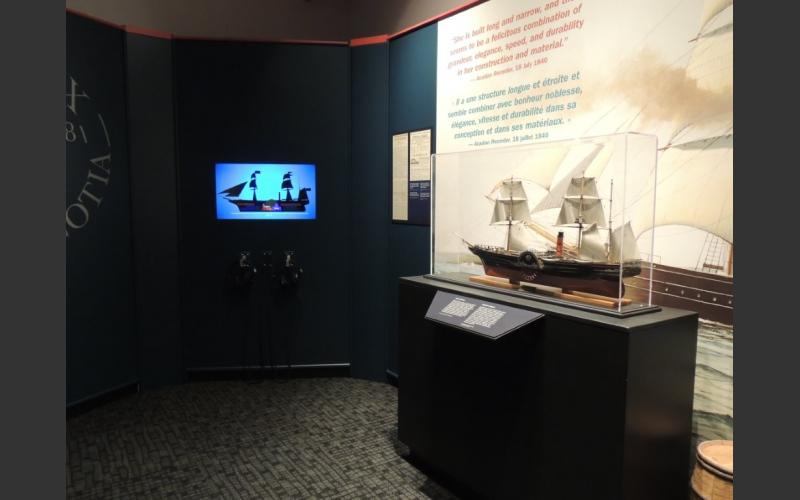
Britannia, the flagship of Cunard’s new steamship line was launched in 1840 and greatly reduced the time it took to cross the Atlantic from England.
 Cunard 175: Engine for Change
Cunard 175: Engine for Change Sir Samuel Cunard, 1787-1865
Sir Samuel Cunard, 1787-1865 The Cunard family settled in Halifax and their business benefitted from privateering during the War of 1812.
The Cunard family settled in Halifax and their business benefitted from privateering during the War of 1812. French-made tea warmer ca. 1830s-1840s said to have been used in the Samuel Cunard household.
French-made tea warmer ca. 1830s-1840s said to have been used in the Samuel Cunard household. Locating along the Halifax waterfront gave the Cunard business many opportunities.
Locating along the Halifax waterfront gave the Cunard business many opportunities. As agent for the East India Co., Cunard brought shiploads of tea from China to the elite of Halifax and elsewhere.
As agent for the East India Co., Cunard brought shiploads of tea from China to the elite of Halifax and elsewhere. This bell from a shipwreck helps to tell the story of Cunard’s concerns for safety on the sea as Nova Scotia’s Lighthouse Commissioner.
This bell from a shipwreck helps to tell the story of Cunard’s concerns for safety on the sea as Nova Scotia’s Lighthouse Commissioner. Cunard was agent to a coal company headquartered in Pictou County which gave him access to coal and steam engines.
Cunard was agent to a coal company headquartered in Pictou County which gave him access to coal and steam engines. Cunard celebrated the arrival of Samson from England, one of the first locomotives ever seen in Nova Scotia.
Cunard celebrated the arrival of Samson from England, one of the first locomotives ever seen in Nova Scotia. The rise of steam power strongly influenced Cunard and his fortunes.
The rise of steam power strongly influenced Cunard and his fortunes. The Royal William, in which Cunard was an investor, crossed the Atlantic from Pictou to Liverpool, England in 1833, powered mostly by steam.
The Royal William, in which Cunard was an investor, crossed the Atlantic from Pictou to Liverpool, England in 1833, powered mostly by steam. Ship models help to tell the Cunard story.
Ship models help to tell the Cunard story. The beginning of the Cunard steamship line is explained.
The beginning of the Cunard steamship line is explained. Visitors can operate this side lever steam engine model to explore the technology Cunard first used in his steam vessels.
Visitors can operate this side lever steam engine model to explore the technology Cunard first used in his steam vessels. Britannia, the flagship of Cunard’s new steamship line was launched in 1840 and greatly reduced the time it took to cross the Atlantic from England.
Britannia, the flagship of Cunard’s new steamship line was launched in 1840 and greatly reduced the time it took to cross the Atlantic from England.